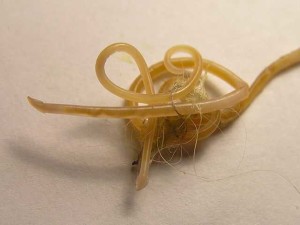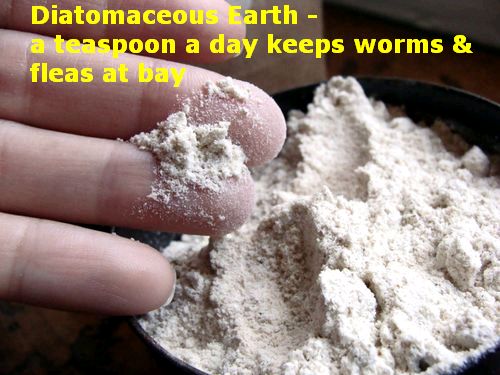The 3 Common Worms in Cats

When cat owners get together, they exchange stories about how quirky or cute their pets are, laugh over the “biggest hairball I ever saw” joke but they almost never discuss deworming their pets! Yet, worms are a very common ailment, even in well cared for animals.
The three most common worms in cats are Roundworms, Tapeworms and Hookworms. If you have ever needed to know more about what they are the damage they can cause then read the article below…
ROUNDWORMS (Toxocara cati, Toxascaris leonina)
These are the most common form of parasite in today’s cat. Roundworms can grow from 2-4 inches long and can overwhelm a cat’s stomach giving it a potbelly appearance.
Cats can easily pass a whole live, roundworm (thin, spaghetti-like critters) which results in a freaked out call to the vet from horrified owners! Roundworms can cause weight loss and diarrhea or vomiting. And in very severe cases, they can actually so numerous, that they can cause bowel blockages!
Cats can get roundworms from other cats, infected prey animals (rodents, rabbits and squirrels) or even from the soil where other infected animals have defecated.
Roundworms are also the cause of Visceral Larva Migrans in humans. Young children are at high risk for this disease due to roundworm eggs being found in sandboxes, playgrounds and yards. Visceral Larva Migrans can affect the lungs, liver, eyes, the brain, heart, and other organs.
HOOKWORMS (Ancylostoma braziliense)
Hookworms are dangerous bloodsuckers that can kill a kitten or adult cat depending on the severity of infestation and the overall health of the cat. At other times, a cat with severe hookworms may require a blood transfusion in order to recover. Hookworms are most often found in areas with warm, moist environments.
Signs of hookworms are anemia (pale, mucus covered gums), dark stools (passed blood), weight loss and dull, poor looking coats. Hookworms can’t be seen with the naked eye, so if you suspect or know that hookworms are prevalent in your area, take your pet to a vet for tests immediately.
Hookworm eggs can lie dormant for months in the soil around apartment complexes and other outdoor areas that infested animals may frequent. Even if you pet lives alone, just by playing in an infected area, it can ingest a hookworm egg or even have one burrow under its skin while resting on the ground.
TAPEWORMS (Dipylidium caninum, T. taeniaeformis)
Tapeworms round out our worm trilogy. Tapeworms are visible to the human eye like round worms. The first time a cat owner usually knows their pet is infested is when they notice “dried rice” or “sesame seeds” stuck to the cat’s bedding or on its anal area. These nasty bits are dried tapeworm segments.
The most common way for tapeworms to enter a cat’s system is via fleas. Yes, our vampiric friend, the cat flea is also a prime carrier of tapeworms. Tapeworms if left to grow can cause very horrible stomach cramps, diarrhea and even convulsions in cats as their systems become overwhelmed with toxins from their uninvited guests.
Like roundworms, humans can sometimes become infested with tapeworms due contact with infected animals. This is yet another reason that you should control your cat’s flea problem.
Both roundworms and tapeworms can now be treated with over the counter tablets that are inexpensive. Hookworms, however, must be treated by your vet since it can quickly lead to more serious conditions. But if you are not sure which type of worm infestation your pet is suffering, please visit your local vet for a proper diagnosis.

“Toxocara cati 2 beentree” by Beentree – Photograph. Licensed under GFDL via Wikimedia Commons